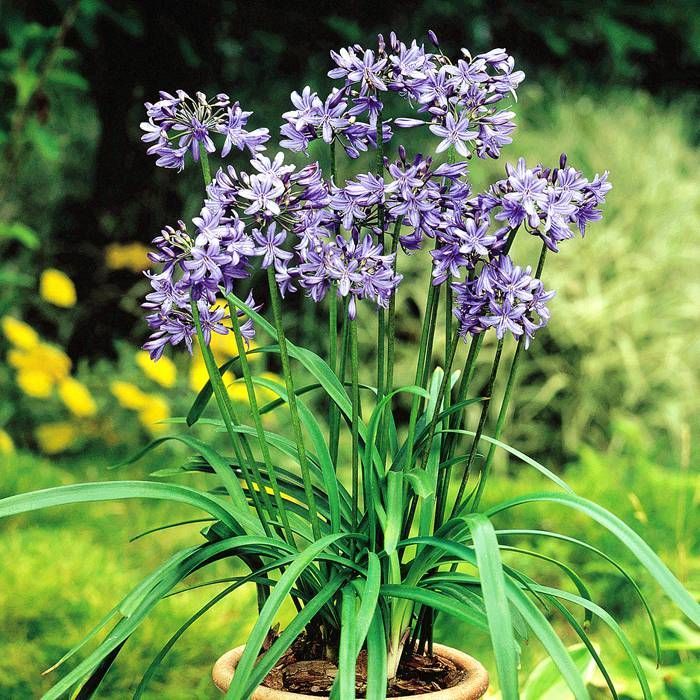Agapanthus Proliferation: Tips for Expanding Your Plant Collection
Opening the Mysteries of Agapanthus: A Thorough Expedition of Selections, Growing Methods, and Upkeep Practices

Agapanthus, frequently shrouded in enigma as a result of its diverse array of selections and complex upkeep needs, emerges as an enigmatic subject for several yard enthusiasts. With a plethora of cultivars offered, each boasting one-of-a-kind attributes and growth behaviors, comprehending the intricacies of these plants can be both rewarding and difficult. As we explore the subtleties of planting methods and explore the important maintenance techniques required to support these spectacular blossoms, a world of opportunities unfolds for those seeking to understand the art of cultivating agapanthus.
Agapanthus Varieties Demystified
Agapanthus selections exhibit a varied variety of qualities, making it essential for gardeners to recognize the distinctions between them for effective farming. One of one of the most preferred variations is the Agapanthus africanus, frequently referred to as the African Lily. This variety is valued for its striking blue or white blossoms and its capacity to flourish in both containers and garden beds. The Agapanthus praecox, or Blue Lily of the Nile, is an additional favored option, flaunting huge round clusters of blue or white blossoms atop tall stalks.
For those seeking a much more compact choice, the Agapanthus 'Peter Frying Pan' is a suitable choice, with its smaller stature and fragile blue blossoms. On the various other hand, the Agapanthus 'Tornado Cloud' variety provides a remarkable flair with its deep purple flowers and dark foliage (Agapanthus). Additionally, the Agapanthus 'Albus' attracts attention for its pure white blooms, creating a stunning comparison in any kind of garden setting
Understanding these differences can assist garden enthusiasts choose the most appropriate Agapanthus range for their particular needs and preferences, making sure a growing and vibrant yard screen.
Planting Agapanthus Like a Pro
When growing Agapanthus for ideal development and aesthetic influence, thorough attention to soil quality and sunlight exposure is extremely important. Agapanthus prospers in well-draining soil with a somewhat acidic to neutral pH degree. Prior to growing, modify compressed or hefty soil with raw material such as garden compost to improve water drainage and fertility. Pick a growing place that receives complete sunlight to partial color, as Agapanthus generally favors at the very least 6 hours of sunlight daily for durable flowering. When growing, make sure the crown of the plant sits at dirt degree to stop rot and encourage healthy and balanced growth.

Vital Upkeep Tips for Agapanthus
To make sure the ongoing health and vitality of your Agapanthus plants, what key maintenance practices should be focused on throughout the expanding period? Agapanthus plants favor equally wet dirt however can tolerate brief periods of drought when developed. Agapanthus plants profit from division every few years to avoid overcrowding, enhance blooming, and rejuvenate the plant.
Troubleshooting Common Agapanthus Issues
Recognizing and without delay dealing with typical issues that may affect the health and wellness of your Agapanthus plants is necessary for preserving their vigor and appeal. Guarantee your Agapanthus obtain adequate sunshine, ideally around 6-8 hours per day. By being cautious and attending to these usual concerns without delay, you can aid your Agapanthus grow and grow in your garden.
Optimizing Agapanthus Blooms: Expert Methods
Enhancing the vibrancy and wealth of Agapanthus flowers needs a strategic strategy that uses optimum expanding conditions and expert strategies. To maximize Agapanthus blossoms, begin with selecting the ideal range for your area and preferred aesthetic. Agapanthus selections vary in elevation, flower shade, and flower time, so choose one that fits your yard's needs.
Proper planting is crucial for durable flowering. Plant Agapanthus in well-draining soil with adequate sunshine exposure. Make certain the dirt is rich in nutrients and natural matter to support healthy development and respected flowering. Normal watering, particularly during the energetic growing period, is important to protect against stress and encourage blooming.
Fertilize Agapanthus with a balanced fertilizer to advertise flowering. Deadheading spent blooms can reroute the plant's energy right into creating new flowers (Agapanthus). Divide jammed globs every few years to go to website rejuvenate the plant and boost flowering
Lastly, shield Agapanthus from bugs and diseases that can prevent flowering. Applying these specialist approaches will assist you attain a spectacular screen of Agapanthus blossoms in your garden.
Final Thought
In final thought, the enigmas of agapanthus have been revealed with a thorough exploration of varieties, planting techniques, and maintenance practices. By fixing common concerns and applying experienced approaches, one can make the most of agapanthus flowers and produce a magnificent yard screen.
:max_bytes(150000):strip_icc()/agapanthus-growing-guide-7368912_hero-a3585e4f9ffe4b99a73c7ad8eb4ebe48.jpg)
When growing Agapanthus for ideal development and visual impact, thorough interest to dirt high quality and sunshine exposure is vital.To plant Agapanthus like a pro, area the plants according to their mature size to permit for appropriate air circulation and stop congestion. Agapanthus plants benefit from department every couple of years to stop overcrowding, boost blooming, and invigorate the plant.In conclusion, the secrets of agapanthus have actually been unveiled with a detailed exploration of selections, growing methods, and upkeep techniques.